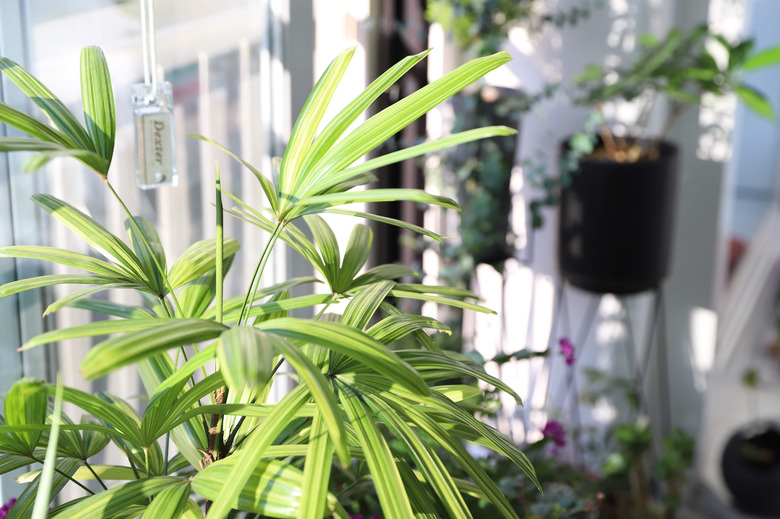How To Care For A Bamboo Palm
The slender green trunks of bamboo palm (Chamaedorea microspadix) have leaf scars along the stems that somewhat resemble bamboo stalk markings, giving the plant its common name. Suitable for gardens, container growing and as a houseplant, clustering bamboo palm grows to 10 feet tall outdoors and 4 to 6 feet tall as an indoor plant. One of bamboo palm's major advantages is its cold tolerance, with the plant hardy in U.S. Department of Agriculture plant hardiness zones 8 through 11.
Soil or Growing Medium
Soil or Growing Medium
Outdoors, bamboo palm tolerates a range of soil types, including slightly alkaline to acidic conditions and light, medium or heavy soils. It prefers a rich, well-draining soil. As a houseplant, grow bamboo palm in a well-draining, peat-based potting mix. Use a pot with drainage holes.
Care for Bamboo Palm: Watering
Care for Bamboo Palm: Watering
Native to forests of central and northeastern Mexico, bamboo palm grows as an understory plant. Its natural habitat is moist, so it appreciates regular watering when it's growing actively. As a houseplant, keep bamboo palm evenly moist while it's growing. Reduce watering in fall and winter. Although the plant doesn't need high humidity to thrive, avoid conditions that dry it out. Protect an outdoor palm from strong winds and an indoor plant from dry air, such as near heating and cooling vents.
Bamboo Palm Light Requirements
Bamboo Palm Light Requirements
Because bamboo palm grows naturally in shaded forests, place it in shade both indoors and outdoors. Its shade tolerance makes it a good plant for homes, offices and other indoor areas where light levels are low. Although it does best in bright, indirect light, you can accustom a palm to grow in partial sunlight if you expose it to more light gradually. Too much direct sunlight can scorch the leaves.
Pruning Bamboo Palm
Pruning Bamboo Palm
As they age, older palm fronds become brown and dry. Prune them away with sharp pruning tools as they form to keep the plant looking tidy. Wipe the pruning shears with a cloth dipped in rubbing alcohol before beginning work to help prevent disease. Cut the frond off near the soil surface. Otherwise, the only pruning bamboo palm might need is to cut old flowering stalks away from a female plant. After the bright orange fruits have fallen, cut off the flower stalk level with the palm's stem.
Fertilizing Bamboo Palm
Fertilizing Bamboo Palm
Because bamboo palm continues to produce new stems from its base during the growing season, it benefits from regular fertilizer. For garden plants, use a palm tree fertilizer, such as 8-2-12 with added manganese and micronutrients in slow-release form. Apply every three months during the growing season at the rate of 3/4 pounds per 50 square feet of canopy, or according to the rates on the label if they vary from this recommendation. Scatter the fertilizer evenly around the drip line of the palm, which is where the outermost leaves extend beyond the plant. Don't apply fertilizer near the trunk.
For an indoor bamboo palm, use a water-soluble fertilizer, such as 15-5-15, monthly during the growing season. Mix 1 tablespoon in 1 gallon of water, or follow the rates on the package if they vary from this recommendation. Water the palm until the fertilizer solution comes through the drainage holes.
Other Bamboo Palm Care Considerations
Other Bamboo Palm Care Considerations
Bamboo palm has no major pest or disease problems. Put on gloves before you handle the fruits, because they contain oxalic acid, which can irritate skin. A bamboo palm is either male or female. A female palm can produce yellow-green flowers under good growing conditions, followed by orange-red fruits if the flowers are pollinated.
